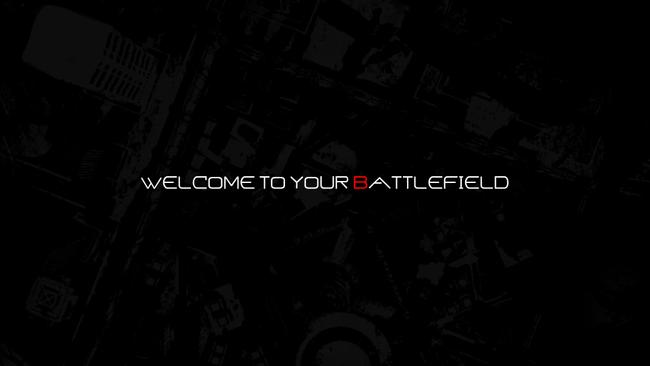
Branching Path: MAN, GOD, MACHINE - A Love Letter to Daemon X Machina
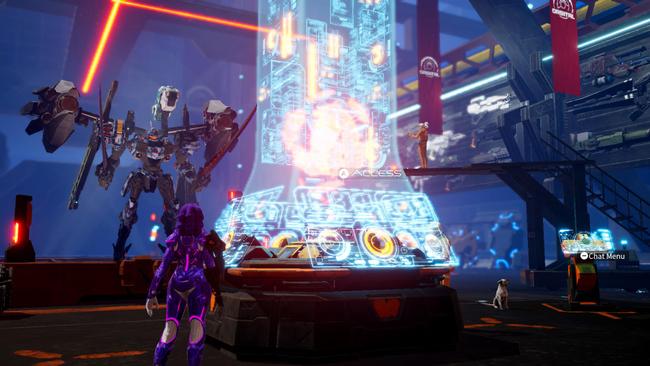
Ten til midnight on a cool Tuesday night. Exhausted, but not quite sleepy yet. Woke up my Switch to a compact, somewhat lonely, hangar area. There it stood in front of me, a bipedal 20-foot hunk of metal I was responsible for… my very own Arsenal.
I didn’t boot up Daemon X Machina that time to blitz through more missions or make any meaningful progression. I wanted to relax and my newest haven was this small hangar where I’d spend the next half hour in front of a terminal picking out and testing new parts to construct an entirely new Arsenal. Before I turned in, I was in for a night of statistical comparisons, weight shifting, and live-fire range tests. And I loved it.
Welcome to another installment of Branching Path on RPG Site, an ongoing series of articles that shines some light to our writers’ other passions aside from the RPGs we cover. This time I wanted to give a bit of context on why the release of Daemon X Machina is so important for a very niche crowd of the gaming community.
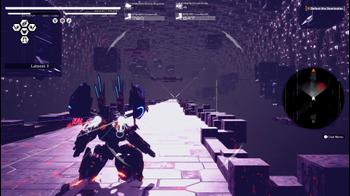
Daemon X Machina is not trying to hide that it’s a spiritual successor to the Armored Core series. Producer Kenichiro Tsukuda, now at Marvelous First Studio, is a well-known veteran of it producing past entries including Armored Core 2, Armored Core 3, and Silent Line: Armored Core. There’s a certain look and feel to Armored Core that tingles the sixth senses of fans when they lay eyes on a new mech game that heavily resembles it; perhaps it’s the chunky sound effects, the somewhat fittingly stiff movements, or the busy UI that looks like a nightmare for spectators but perfect for players. Despite what element distinguishes it to fans, there’s undeniably a X-factor that Armored Core possesses to separate itself from the rest.
Even though Armored Core: Verdict Day released six years ago, most fans look to Armored Core: For Answer as the one they were most fond of and that’s now eleven years old. After the lukewarm response to Armored Core V and Verdict Day coupled with the rapidly rising success of Dark Souls, FromSoftware shifted their focus to developing more Dark Souls sequels along with Bloodborne, Sekiro: Shadows Die Twice, and now Elden Ring. I don’t think it was the wrong decision looking at it from the bigger picture, though it’s easy to see how fans of Armored Core feel underserved and frankly, abandoned.
First unveiled as a surprise announcement leading the E3 2018 Nintendo Direct, Daemon X Machina immediately gave off a strong impression to mecha fans around the world. Observant eyes noticed that it had a killer cast working on it. Besides Tsukuda, the legendary Shoji Kawamori of Macross fame was in charge of the game’s mechanical designs and Yusuke Kozaki, most recognized for his work on No More Heroes and Fire Emblem Awakening, was handling its character designs.
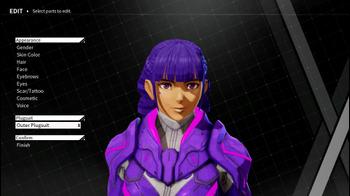
Eight months later, the early Daemon X Machina: Prototype Missions build was released to the public for a limited time giving players a chance to play and send feedback to the developers in a follow-up survey. I got around to downloading this, but admittedly didn’t have time to actually boot it up and check it out. Apparently this wasn’t a great first impression to a lot of players due to a lack of quality-of-life features and rough optimization tanking performance frequently. I’m not entirely sure how the overall community felt about Daemon X Machina at this point after speaking to a handful of people who played it. Most individuals seemed understanding that it was an early build, though there was certainly an aura of anxiety.
There wasn’t a significant showing of Daemon X Machina again until E3 2019. Marvelous First Studio put together a new trailer highlighting several crucial quality-of-life features they added thanks to feedback from the Prototype Missions test. A new, updated demo with the final build of Daemon X Machina launched a week before its release and progress from that demo could be transferred to the full game. The performance was significantly improved and it was a great showcase of properly utilizing an “early access” model to improve upon the final product.
I’m closing in on 35 hours now in my Daemon X Machina playthrough. I finished the entire single player campaign, all the optional free missions, and put a lot of time into online multiplayer with several friends and random strangers. There are currently three Arsenals I deploy - all with different parts, weapons, and color schemes. They all handle differently and specialize in different playstyles Needless to say, I’m loving my time with Daemon X Machina and it exposed how much I missed Armored Core.
Daemon X Machina is a more accessible Armored Core and I don’t think that’s necessarily a bad thing. It provides a decent entry point into what the allure of these kinds of games are all about - the type that asks players to tap into their creativity and construct a giant robot from the ground up piece by piece. Armored Core saw many refinements from its plethora of releases over the years and Daemon X Machina implemented a handful of them from the get-go; AI party members, weapon variants that have alternate stats, a training test ground, saving entire mech loadouts to switch between, online co-op multiplayer, and so forth. I imagine this must sound absurd and some of this should be filed under baseline expectations these days, but all of these features took a lot of time to be added into Armored Core. Diving into a new Armored Core entry and getting excited over a training mode or cloned, repurposed weapons was a big deal for fans.
If Daemon X Machina was considered an Armored Core 6, its biggest gameplay contribution to the series would probably be the move to inherently having infinite flight time, the Femto Mirage ability, and the three Femto modes that enhance an Arsenal’s offense, defense, or mobility. Femto is a type of energy resource in the game; think of it as magic in a RPG. This Mirage ability summons a body double to act as a decoy that expends your Femto bar overtime. Meanwhile, three separate circular bars govern how much you can utilize the other modes. It probably sounds complicated on paper, but it’s actually easy to wrap your head around once you see it in action.
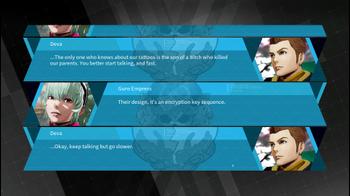
It’s not just merely another Armored Core from top to bottom though. There’s enough differences in Daemon X Machina that separates itself enough to craft its own identity. Obviously, its visual style is a stark contrast from the overall mechanically drab layer in most Armored Core games. The creative saturated cel-shading throughout Daemon X Machina gives it a certain vibe apart from its core inspiration.
Of course, one of the most drastic differences in Daemon X Machina is that there are actually character models for well, its characters. Armored Core has always represented its characters either with their mecha’s body language or a logo for the organization they work for as they spoke. Merely providing a model for its cast gives it a very distinct flow apart from Armored Core; the unique designs of each pilot gives players an idea of what kind of person they are. Another gigantic change-up is the ability to exit your mech as well, though I honestly don’t like the on-foot gameplay as much. Thankfully it’s minimal.
Look, both Daemon X Machina and Armored Core aren’t perfect games. They have a lot of flaws and in some cases, share the same downfalls. If this were a formal review, I’d be dinging Daemon X Machina for lackluster environmental variety and inconsistent level design. Its nods to earlier Armored Core games are cute with several labyrinthian tunnel stages and instances that resemble moments from them, but it fails to entirely capture its magic with the absence of 1-vs-1 Arenas to face off against other characters to acquire their schematics to build their Arsenals as your own more easily. Being confined to only bipedal leg parts makes all the giant robots you build feel a tad samey up to a certain point; even early Armored Core installments had quadrupedal and tank tread options for legs.

The list can go on for sure, though I think it’s important to contextualize that Daemon X Machina is the first of hopefully more games to come. All of these absent features can always come back. It took time for Armored Core to get to where it is, so I’m crossing my fingers that Daemon X Machina isn’t a one-and-done type of deal.
Its foundation is so solid. I’m personally a fan of the weird story it tries to tell. After a devastating moonfall event that struck the Earth, a new dangerous threat known as the Immortals rose from the tragedy and started corrupting AIs against humanity. You start off merely as a new mercenary climbing the ranks and slowly get roped up into hidden truths.
My favorite aspect of it all are the mercenary factions you meet along the way and their banter with one another as they butt heads with opposing ones is truly amusing. It bums me out that my character is merely a silent spectator peeking their head briefly into what seems like multiple anime storylines happening simultaneously that converge once in awhile. Daemon X Machina’s narrative presentation holds back a lot of its potential and that comes crashing down by the story’s final act with scenes entirely told in text conversations prevailing over the occasional cutscene here and there with character models. It's a shame because Daemon X Machina's story has me hooked; there are traces of M3: Sono Kuroki Hagane and Muv-Luv Alternative sprinkled throughout it and I absolutely love them.
Daemon X Machina is an important game in a time where these kinds of mech games are depressingly sparse. Devolver Digital’s re-release of Metal Wolf Chaos doesn’t scratch the same itch. Gundam Breaker 3 is not quite there either with a different goal in mind. The Super Robot Wars and SD Gundam G Generation series are in an entirely different genre altogether. Nothing can really match the cathartic feeling I get adjusting the size of my lock-on sight and optimizing my fire rate just right in the dead of night like Armored Core, but Daemon X Machina gets damn close. These types of games aren’t something I can recommend to everyone but for the crowd it speaks to, it speaks volumes.
